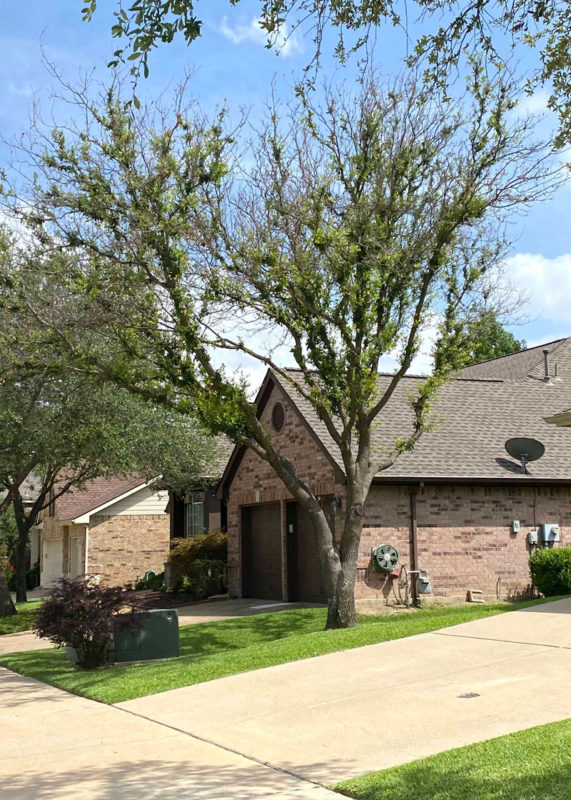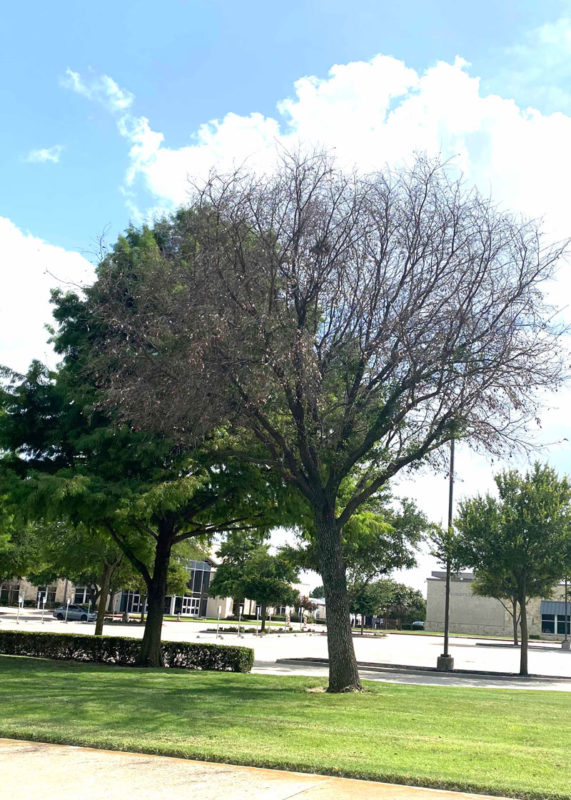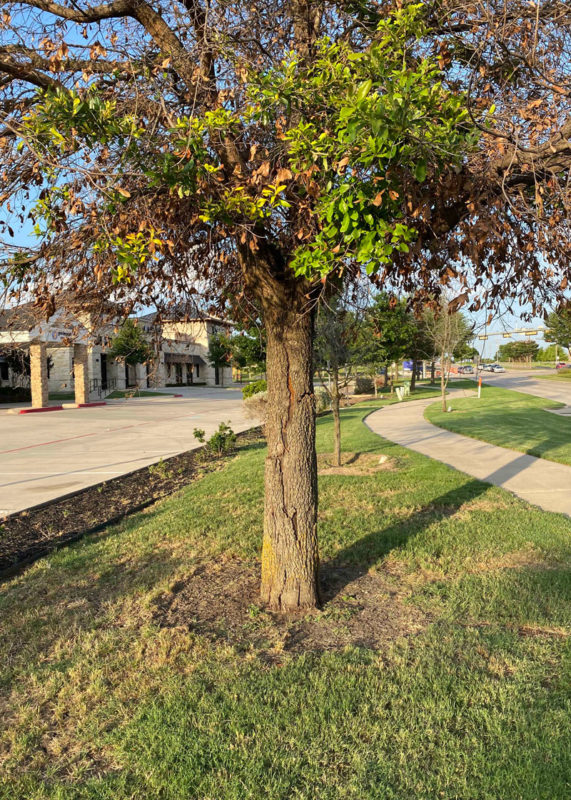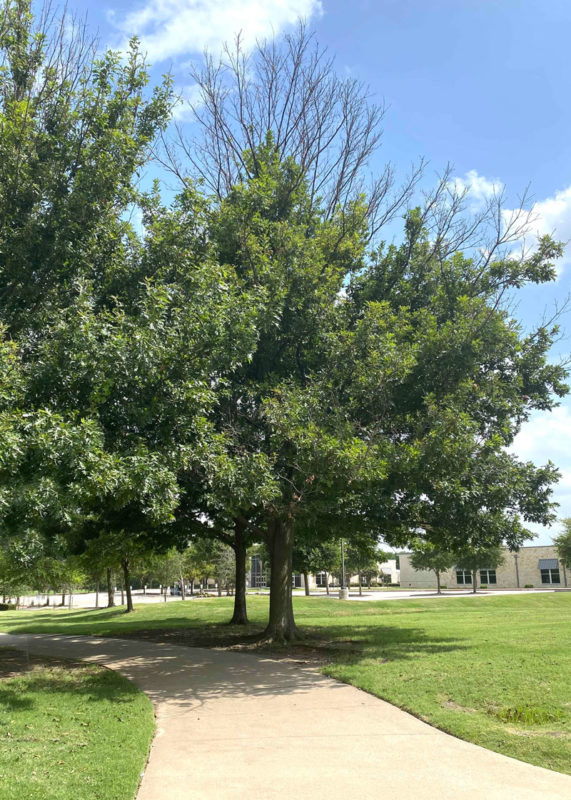Where Are We With Oaks?
Before I go any farther with this story on freeze damage to oaks across Texas I need to tell you that Steve Houser’s company, Arborilogical Services, is a sponsor of several things that I do, including this e-publication.
However, neither Steve nor I would let that get in the way of honest reporting on the status of trees in our state. Here is what he sent me a few days ago.
Our Observations of Oaks…
As reported by Steve Houser of Arborilogical Services of DFW, July 16, 2021.

We are seeing a small number of red oaks, live oaks, post oaks, Lacey oaks, bur oaks and blackjack oaks that are damaged. The number of trees affected within each species varies from 5 to 20 percent.

The amount of damage to the crown varies by each individual tree, with some being minor crown loss (5 to 20 percent) and some being major (30 to 80 percent).
Quite a few of the affected trees also have trunk damage and splitting bark. Just tap all around the trunk at 6 feet or below with a small hammer or pocketknife. If it sounds hollow, the trunk and its vascular system are damaged.

There are some trees with trunk damage that have leafed out normally but that may have problems in the future.
Our certified arborists have noticed that smaller live oaks have been more likely to have suffered trunk damage than larger trees, possibly due to the thicker bark on the more mature trees.

Some of these trees with trunk damage are also showing iron deficiency symptoms (“chlorosis”) of their foliage as well, even though the soils contain all the nutrients they need. We’re also seeing these same problems on ash and elm specimens.
If the dead areas of these trees do not leaf out in the next couple of weeks, they probably will not leaf out at all. The choice then becomes to remove the dead areas back to green tissues or to remove and replace the tree entirely.
Those who wait to remove dead trees or dead portions of otherwise live trees run the risk of the dead branches falling and causing damage or injury.
As a general guideline, if a tree has more than 50 percent of its normal foliage, it may be worth saving. Less than 50 percent would be questionable.


To which Neil adds… I’m seeing many Shumard red oaks with tufts of green leaves scattered through their canopies, almost like what you’d see on a French poodle.
As Steve suggested with the live oaks, watch their trunks closely. If you see splits developing, check them for soundness. Watch the tree for improvement or decline. Get an ISA (International Society of Arboriculture) certified arborist on site to advise you.
The same thing would go for other oak species as we continue to watch the impact of this most unusual year unfold.
